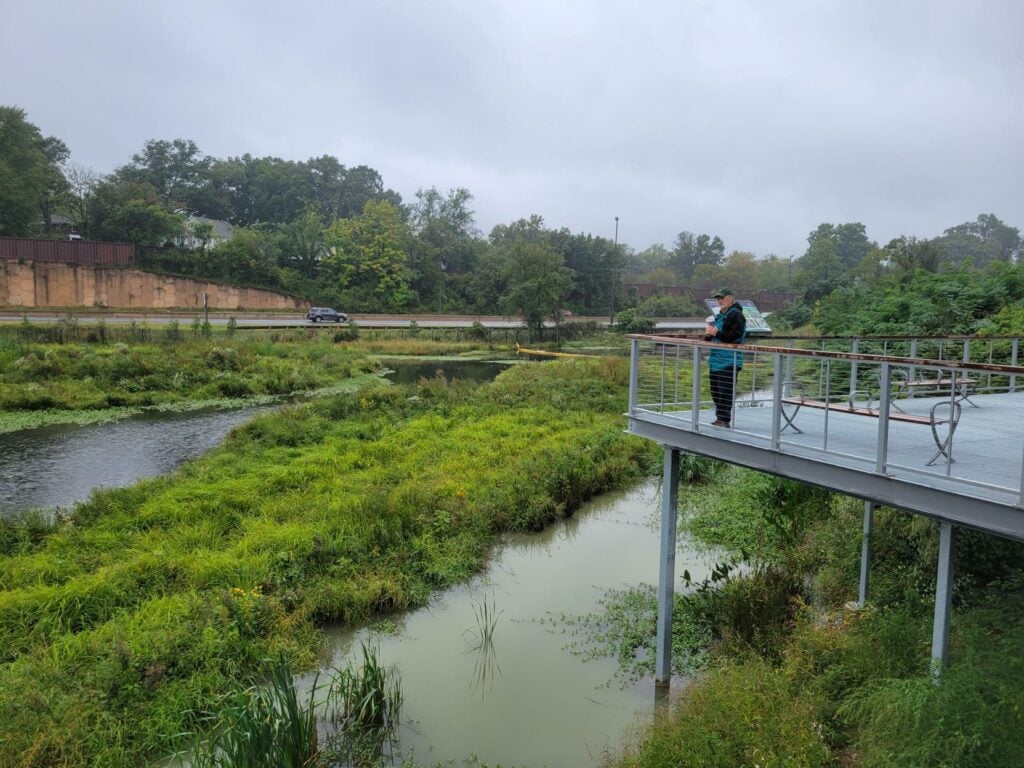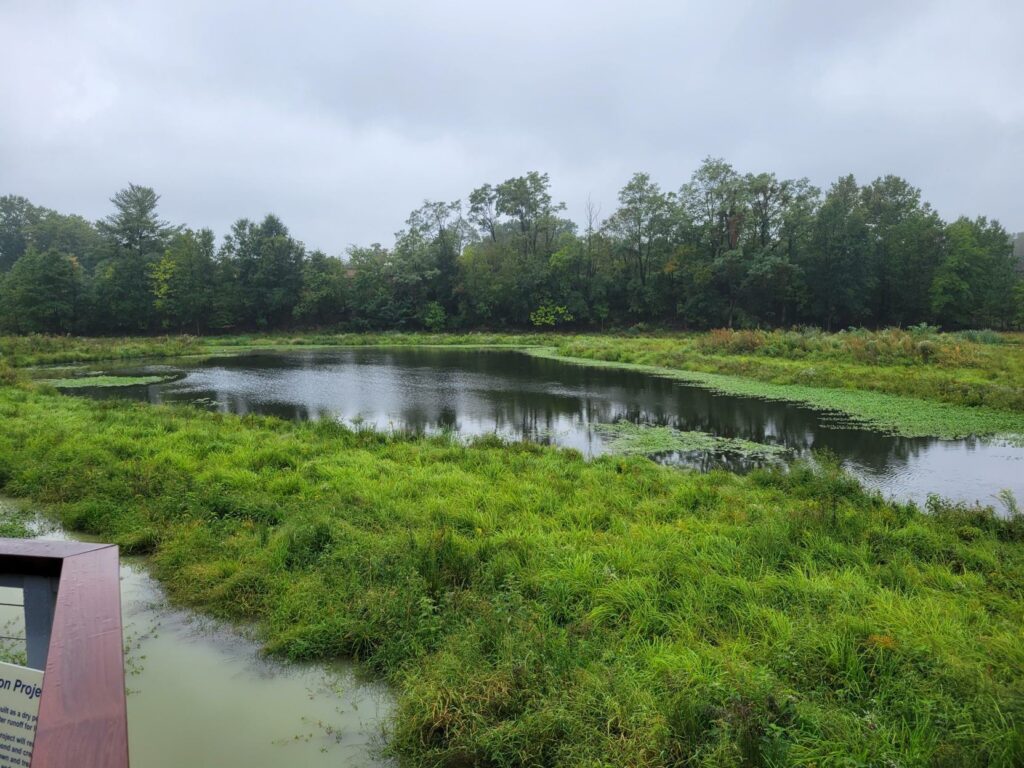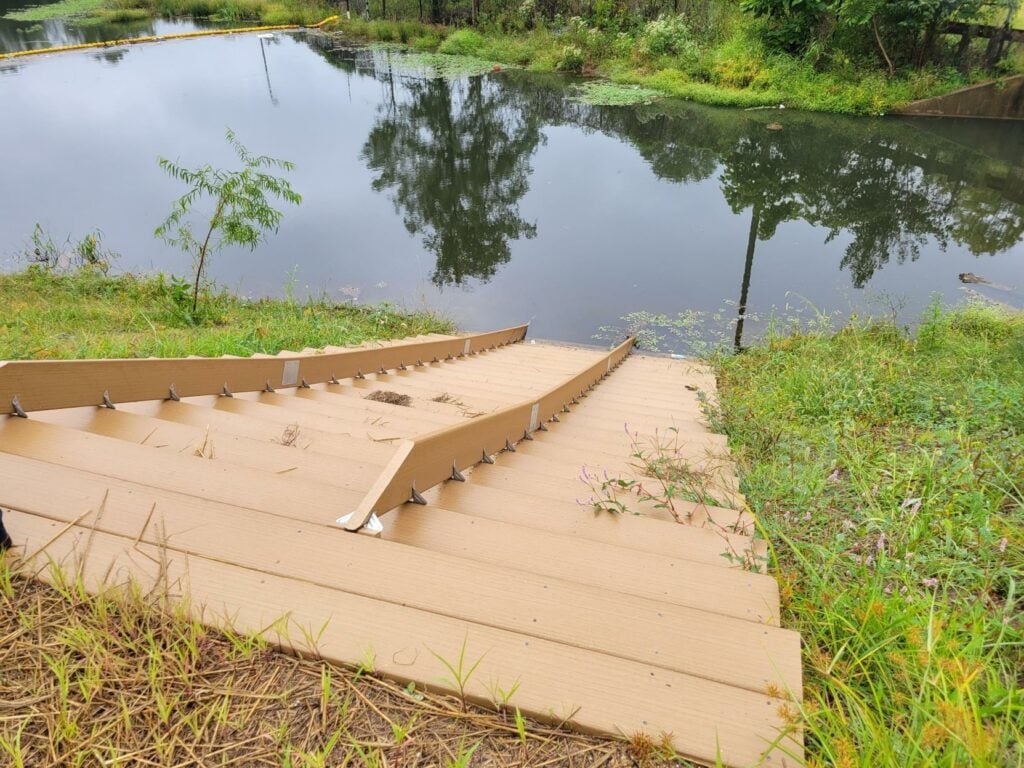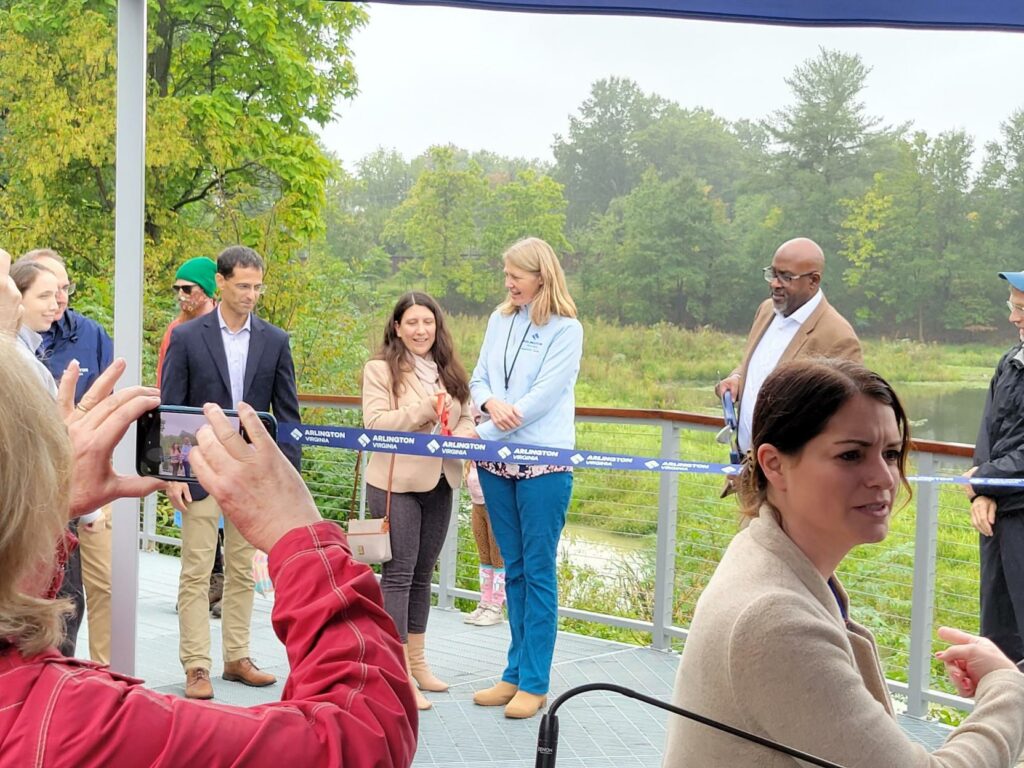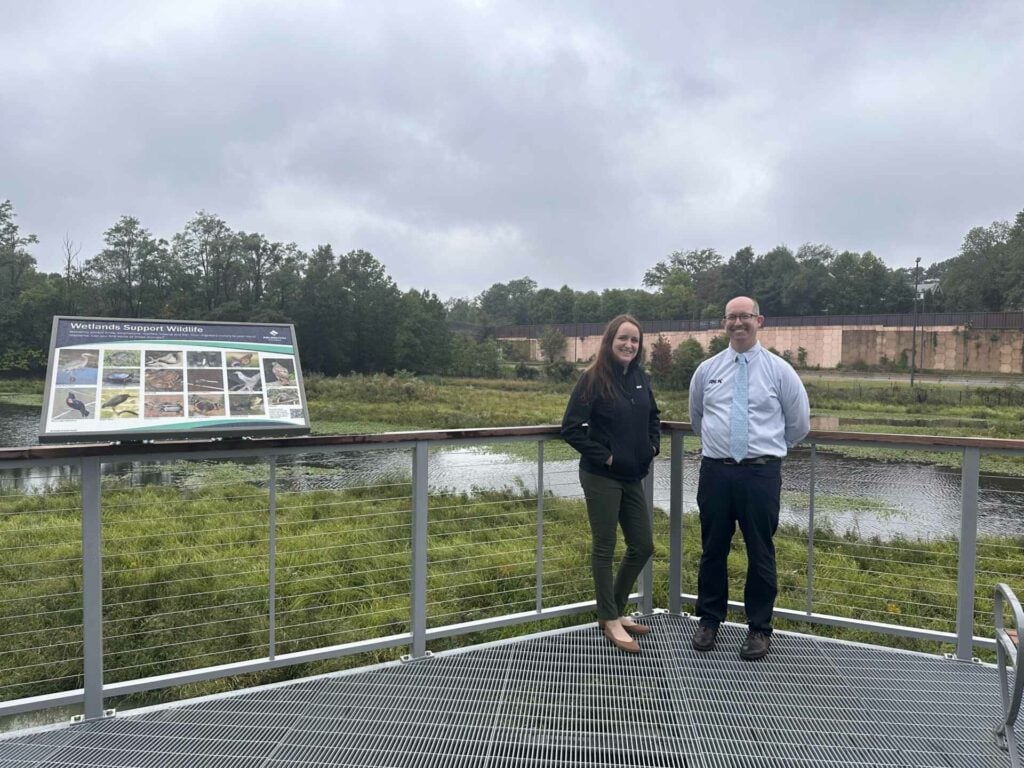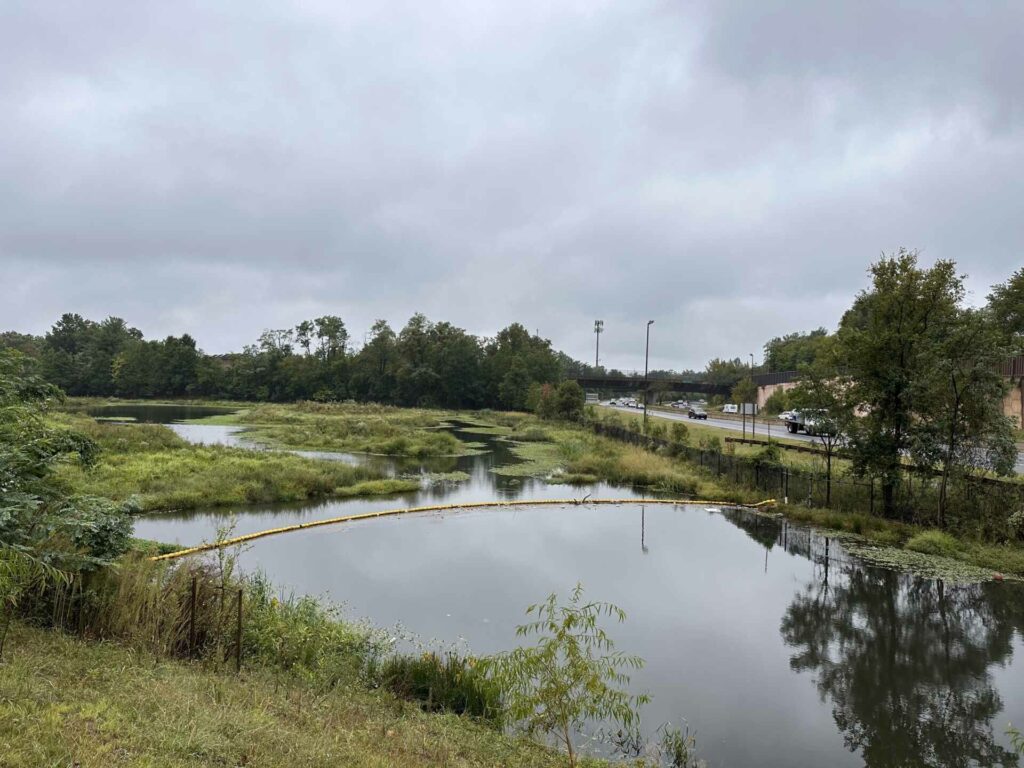RK&K recently participated in a ribbon-cutting event celebrating the completion of the Ballston Pond retrofit and enhancement project in Arlington, Virginia.
This project marks a significant environmental and public improvement for the community as the location was identified as a prime opportunity for regional stormwater management enhancements benefiting the area.
RK&K’s Fairfax team contributed planning, engineering, construction documents, and construction inspection services on this urban retrofit project. Through their work, the overall strategic goal of reducing sediments, litter, nutrients, and other pollutants by creating a functional wetland and providing a stable receiving channel along the banks of the pond was met successfully.
The project utilized carefully selected native wetland plants to improve water quality by providing nutrient uptake and an enlarged forebay to assist in the reduction of sediment. The retrofit aims to duplicate the original detention characteristics of the pond, without increasing 100-year water surface elevations and localized flooding risks.
“What I like most about this project design is that it displays an acknowledgment that a stormwater practice does not have to be traditional grey infrastructure or plain detention basins, but it also can be designed to provide habitat for local flora and fauna and recreational benefits to the community,” said Project Scientist Catherine Cruz-Ortiz. “I think this project is a positive step forward in bridging a disconnect for the people who live in that community and serves as a reminder that development and nature do not have to be mutually exclusive.”
The design of the enhanced Ballston Pond in Arlington, VA helps reduce sediments, litter, nutrients, and other pollutants in the surrounding community by creating a functional wetland and providing a stable receiving channel.
Cruz-Ortiz explains that, from a natural resource standpoint, the most significant challenge of this project was the sheer density of vegetation that made the required inventories difficult to perform.
According to Project Engineer Erin Cox, PE, the team also had to tackle extensive invasive management, a large amount of soft water-laden sediment buildup, and a large contributing watershed. These factors made managing the site during construction difficult since many traditional practices were not applicable due to site constraints.
As a solution, the design team proposed unique flow diversions, construction access points, and a step-by-step plan for removing/staging the sediment buildup. In addition, given the large amount of flow through the site, special care was given to containing and stabilizing construction disturbance to protect the downstream system. The final result was a detailed sequence of construction that allowed the contractor access to as much as possible while maintaining continuous water flow through the site.
“As an urban resident myself, I know how important it is to have connections to nature. Intentional designs like this site give the public an opportunity to find this connection without a trip out of the city, no matter if it is along their normal commute or weekend stroll,” said Cox.
